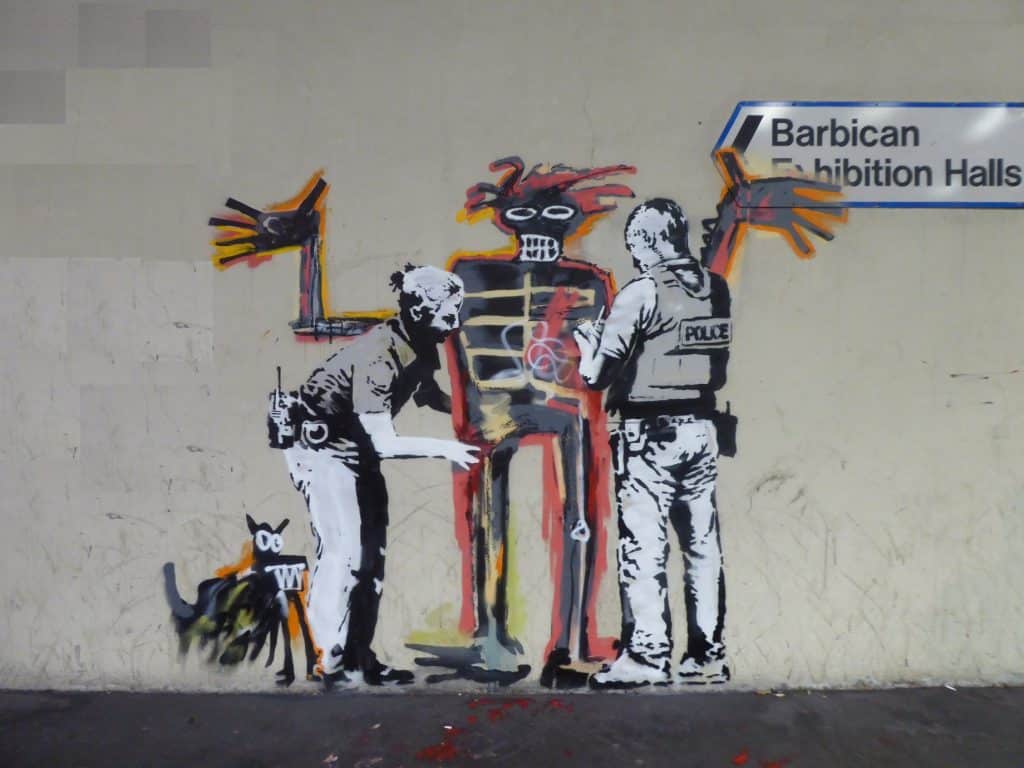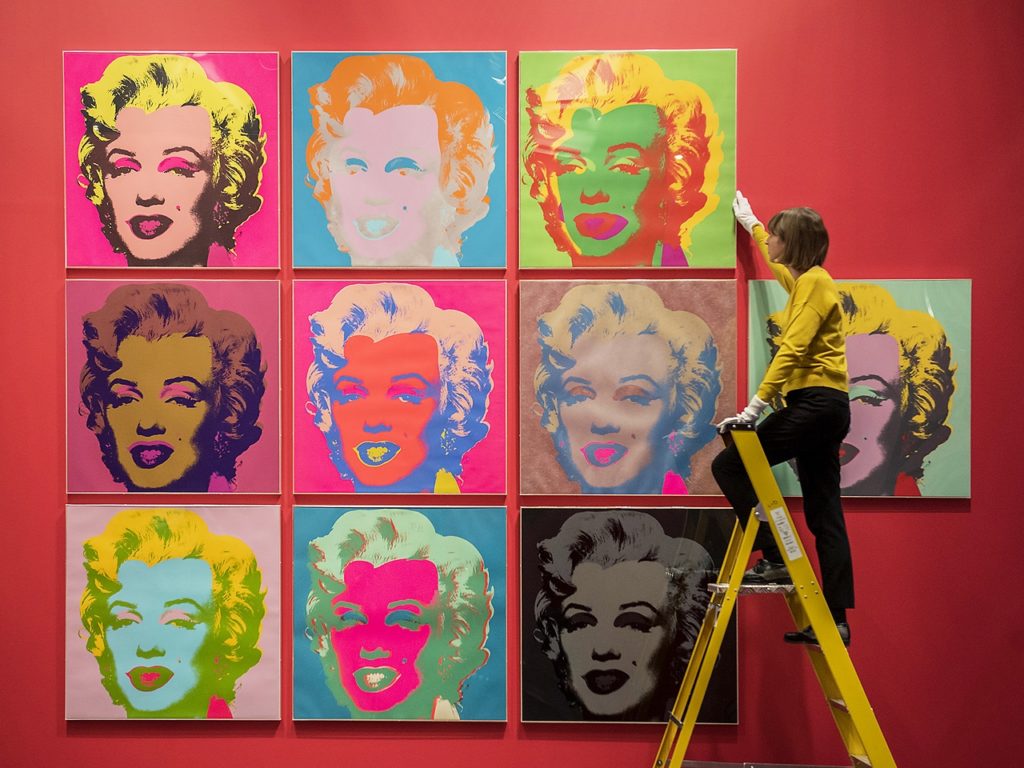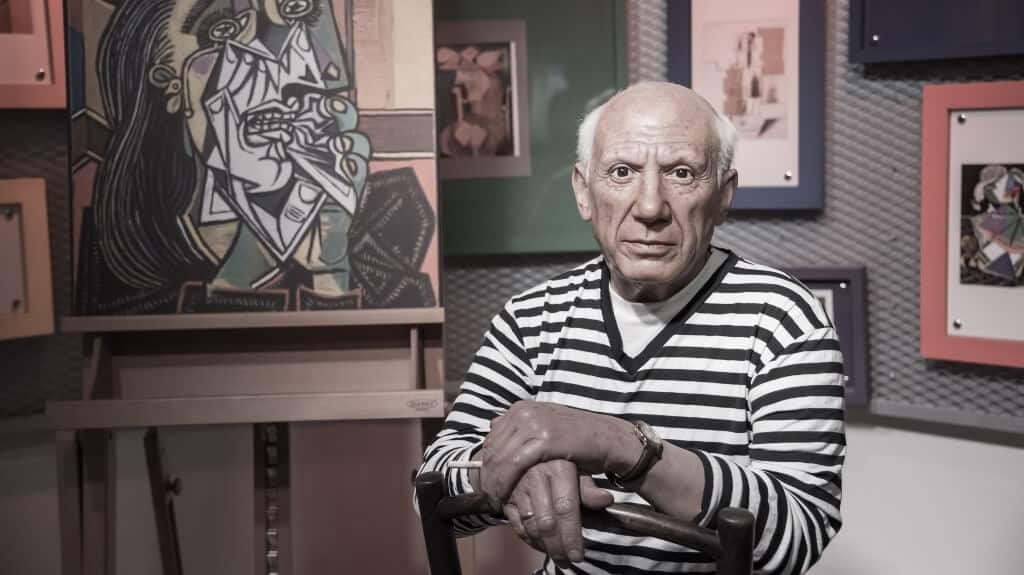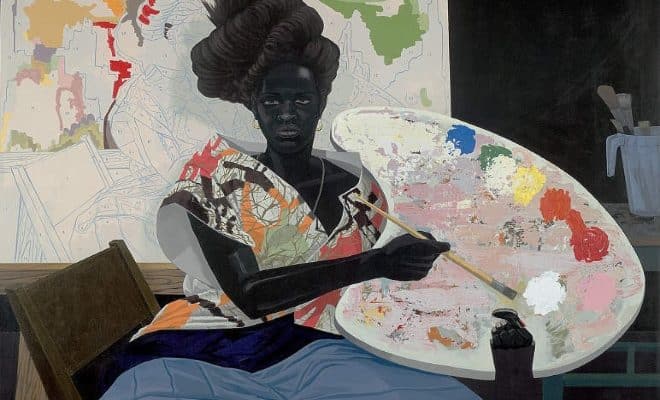The artistic world has always offered shelter to an array of various misfits who broke the standard molds and wanted to find their way out of mediocrity. If you are an aspiring artist who is still looking for the perfect way to present your work on the bustling contemporary art scene, we offer you a guide that will help you define your artistic style and articulate a genuine, creative “voice.”
Apart from the tips on how to best define your creative expression, our guide will also show you the steps you should take to turn your artwork into a powerful and valuable brand. The times of struggling artists who lived for their art have long passed. Nowadays, artists want to find a way to live from their work and build a significant and long-lasting art career.
First, let’s see what steps artists should take to define their art and artist brand to make their work stand out among the crowded competition.
How To Find The Best Way To Express Your Art Style
If you wonder why it is important to attach a definition to your art — the answer is simple. This will distinguish you from an array of others fighting for their spot and recognition among the highly competitive contemporary art scene.
Banksy, a famous street artist, and his globally popular work is a perfect example of a precisely defined art. He managed to create a powerful and unique art brand by making provocative,socially-engaging street art that anyone can identify as his, just by taking a glance at it. Here, we will help you achieve the same goal by showing you how to make your work recognizable.

● Find Your Original Story to Tell
This is one of the most important steps that every artist has to take if they want to leave their footprint in the art world. It is also one of the hardest steps because it requires endless hours of soul searching to find the essential message you want to convey through your art and share it with your audience.
Anything can be a plot of your artistic story: your history, your background, some poignant memory, or a deeply rooted belief. It doesn’t matter as long as it is genuine, honest and heartfelt. This process of exposing your deepest emotions, fears, beliefs, or principles through your artwork may be painstaking, but it will definitely add distinction and value to it. It will also attract like-minded audiences that will be able to identify with your work.
● Understand the Importance of Subject Matter
Subject matter is another aspect of artistic vision that is closely intertwined with the message an artist wants to share with the world. The subject matter plays an essential role in defining your art because it will make you recognizable as an author. Simply put, the subject matter is an artistic genre you choose to tell your story best. Some amazing artists are remembered by their still-lifes or portraits, while other preferred landscapes or abstractions. Whatever your subject matter may be, make sure it complements your story perfectly because this is the most compelling way to present your artistic vision truthfully.
Your subject matter may be determined by your lifestyle, personal experience, or social challenges and issues you want to put in the spotlight. Nowadays, artists turn to conceptual or performance art and installations to address the problems that they care about deeply, like isolation, social or political activism, or environmental issues.
● Choose the Medium You Work with Wisely
We cannot talk about how important it is to choose a subject matter that will distinguish your art from others on the contemporary art scene without mentioning the medium that will best express your artistic vision. Medium is the material you choose to work with, and it has to go hand-in-hand with the story and the subject matter to create a memorable and well-defined piece of art.
When it comes to medium (i.e., materials and tools you want to use for your art), choose those that will faithfully embody your original story. You should also opt for a medium you enjoy working with. The creative process doesn’t always have to be an arduous attempt to get your message across; it should also be a process that brings joy and satisfaction to the artist. A large number of contemporary artists combine several different mediums, like light, film, sound, and complex installations, to create unique works of art.
We believe that a genuine story or message, accompanied by consistent subject matter, along with a cleverly chosen medium, make up the “Holy Trinity” when it comes to defining your artistic style. However, there are some other aspects of your work you should pay attention to if you want to create distinctive and memorable art pieces.

● Be Consistent in Style
You may be asking yourself how consistency may contribute to defining your art, or you may fear that consistency in the creative process may easily slip into the repetitiveness that will drive your audience away. However, we want to reassure you that when you stay consistent with the subject matter and the medium you use in creating your art while using similar color tones, shapes, or techniques to bring your own artistic vision to life, you will have found a style that people will easily recognize you by. When we see a Picasso, we don’t have to double-check if it is a Picasso, thanks to the artist’s consistency in his idiosyncratic style.
When you find the medium and subject matter that best reflects your idea and faithfully conveys it to the public, you will soon develop a distinctive style that will make your art stand out among the competition.
● Work on Your Skills Constantly
Finding ways in which you can perfect your creative skills is the next logical step after finding consistency. We cannot emphasize enough how significant it is for an artist to continuously improve their skills, so we are going to cite a renowned contemporary artist, Lisa Congdon, who believes that there are 10 steps to perfecting your skills. According to her, these steps are: “Begin, practice, keep showing up, practice some more, stretch yourself, practice, practice, note your improvements, practice some more, repeat.”
Whether you are self-taught or obtained some formal education in the Arts, you have to be aware of the fact that talent and skills may fade if not supported by persistent work and effort, leaving you with mediocre art pieces that may lack creativity and artistic value. On the other hand, try to follow Congdon’s instructions and dedicate your time to perfecting your skills. This way, your work may gain additional complexity and richness that will set it apart from others.
Another important aspect of improving your skills is stepping out of your comfort zone. If you want to try out some new techniques, you should do so without the fear of failure. If you fail in an attempt to make something new and different, that only means you need to practice more.
● Never Follow a Trend Blindly
Before we focus on the ways in which artists can turn their work into a profitable art brand, we have to mention the trap that many aspiring artists fall into when attempting to make their art profitable too quickly. When you decide to follow a trend and make artwork solely to satisfy market demands, you don’t get a well-defined piece of artwork that truly represents your creativity. What you get is an instant product with temporary value that will fade away, along with the current trend.
So, it seems that the essence of well-defined art revolves around using your genuine artistic “voice” for telling an original story. You also need to choose your subject matter and your medium wisely then use them consistently if you want to become an artist with a distinctive and memorable art style and long-lasting visual language.

How To Turn Your Art Into A Lucrative Art Brand
Art branding relies heavily on defining your art. The first step you need to take is creating a distinctive and recognizable work of art that will relate to an audience that shares similar artistic sensibility. Make sure you follow all the previous steps presented in this guide to define your work in order to present it successfully in the highly-demanding contemporary art market.
Once you have done that, you need to determine what you want to do with your art and define your art practice. In other words, you are going to decide whether you wish to turn your passion for art into a professional art career or just want more public coverage and audience for your artwork without focusing on building your art career. This is an essential question, and its answer will determine the steps artists should take to make a powerful and profitable art business.
For those artists determined to start an artist business and make a living from their work, the next logical step would be pricing your art, by devising a feasible business plan based on the amount of money you have invested and the goals you have set.
● Recognize the Power of Networking
Once you determine your art practice and create a sustainable business plan, you will be ready to present your newly established art brand to art communities that you find fitting.
The subtle skill of networking and spreading the word of novelty on the art business scene can be crucial for making a successful artistic brand. You can run a successful networking campaign by connecting with other artists within your community and taking part in fellow artist and organization’s art projects. In this way, your artwork will get more coverage, and you will find a spotlight for your art in the community of like-minded peers.
You can also connect with renowned professional artists and ask them for advice based on their vast experiences in their career. If you find someone who is willing to help you, you can apply their input to the promotion of your artistic brand.
● Be Visible and Easily Accessible
Social networks have proven to be invaluable tools and indispensable allies in art brand PR and promotion. For starters, you will need to make profiles on social media channels that focus on visual impressions, such as Pinterest and Instagram for younger followers, and a Facebook page that showcases your artwork for a more mature audience group.
Make sure you link your official website or online portfolio – if you have one – to all your social media profiles. This way, when people are interested in seeing your entire body of work or purchasing some art pieces, they will be able to obtain the desired piece more easily.
Also, make sure you always share compelling and eye-catching digital content on your social media pages. Besides this, your posts should always be relevant, true and genuine to your artistic styles, and up-to-date.
There are also free online platforms designed for artists and those who are involved in art business. ARTDEX enables you to make and manage your digital collections and portfolios for free. In addition, this specialized platform makes it possible for users to interact and share their work with other artists, art dealers, and collectors, thus helping them to make significant business connections for the future.
● Try Participating in Various Art Competitions
This is good advice for all aspiring artists who are eager to get their work reviewed and judged by professional jurors. Besides the cash prize that belongs to the winner, you will also gain much-needed visibility for your artwork and recognition in the professional art world. Take the time to browse the internet regularly to search for artistic organizations that post entries for various art competitions.
● Learn How to Increase Value of Your Art
True artists should find their genuine voice and their unique, expressive style, and they need to be encouraged to tell their original stories through their art. These are the main postulates that define a valuable and recognizable work of art, which we explained throughout this guide. But genuine artists also need to know how to increase the value of their work if they want to turn it into a powerful brand coveted by the greater art audiences.
When we say “know your value,” this doesn’t mean that you should put the commercial success of your work of art before having a genuine message that conveys your true artistic talent. This would be a huge mistake. Nevertheless, you need to be aware that art branding involves much more than creating superb artwork alone. In the fast-paced digital world we live in, image itself, both physically and metaphorically, seems to be everything. So, if you want to turn your art into a successful brand, you have to create an intriguing image for yourself as an artist, along with an equally compelling story that revolves around your art.
Let’s get back to Banksy, who has been an enormously successful artist, turning his cleverly elusive street art into the million-dollar item sold at Sotheby’s. He achieved his fame and success by creating the aura of mystery around his artistic persona, which still urges a large number of people to search for and second-guess his true identity. No one seems to know who he really is or how he works. However, he still manages to create highly provocative, socially-engaging art that brings in millions of dollars, before disappearing from his audience until the next gig.
We do not suggest that you should go to these extremes to make your art interesting and intriguing to the audience, but we want to point out that the aura surrounding the artist and their art is the element that can turn a magnificent piece of art into a globally successful art brand. According to Sue Hostetler, Editor in Chief of Art Basel Miami Beach Magazine, Picasso was one of the artists who knew that his extraordinary talent alone wouldn’t get him the global recognition he wanted. For this reason, he created an aura of controversy around himself that translated successfully into adding a huge value and followings to his art.
A Short Recap
We believe that we have pointed out all the essential aspects of a defining work of art that talented artists need to focus on if they want to build a profitable and globally recognizable art brand. If you want your art to be well-defined in the highly competitive international art scene, take this comprehensive list of factors and incorporate it into your creative process.
Defining your artwork is the decisive element for turning amazing art into a lucrative art brand. Now that you have read this guide, we believe that you are fully equipped to build a distinctive signature mark for your works of art, which will take you to the next level of branding for your art career and making headway on the bustling arena of the creative world of art and art business.



![[Left] Kusama with her piece Dots Obsession, 2012, via AWARE, [Right] Yayoi Kusama (Courtesy Whitney Museum of American Art) | Source: thecollector.com](https://www.artdex.com/wp-content/uploads/2024/04/Left-Kusama-with-her-piece-Dots-Obsession-2012-via-AWARE-Right-Yayoi-Kusama-Courtesy-Whitney-Museum-of-American-Art-Source-thecollector.com--300x172.png)



